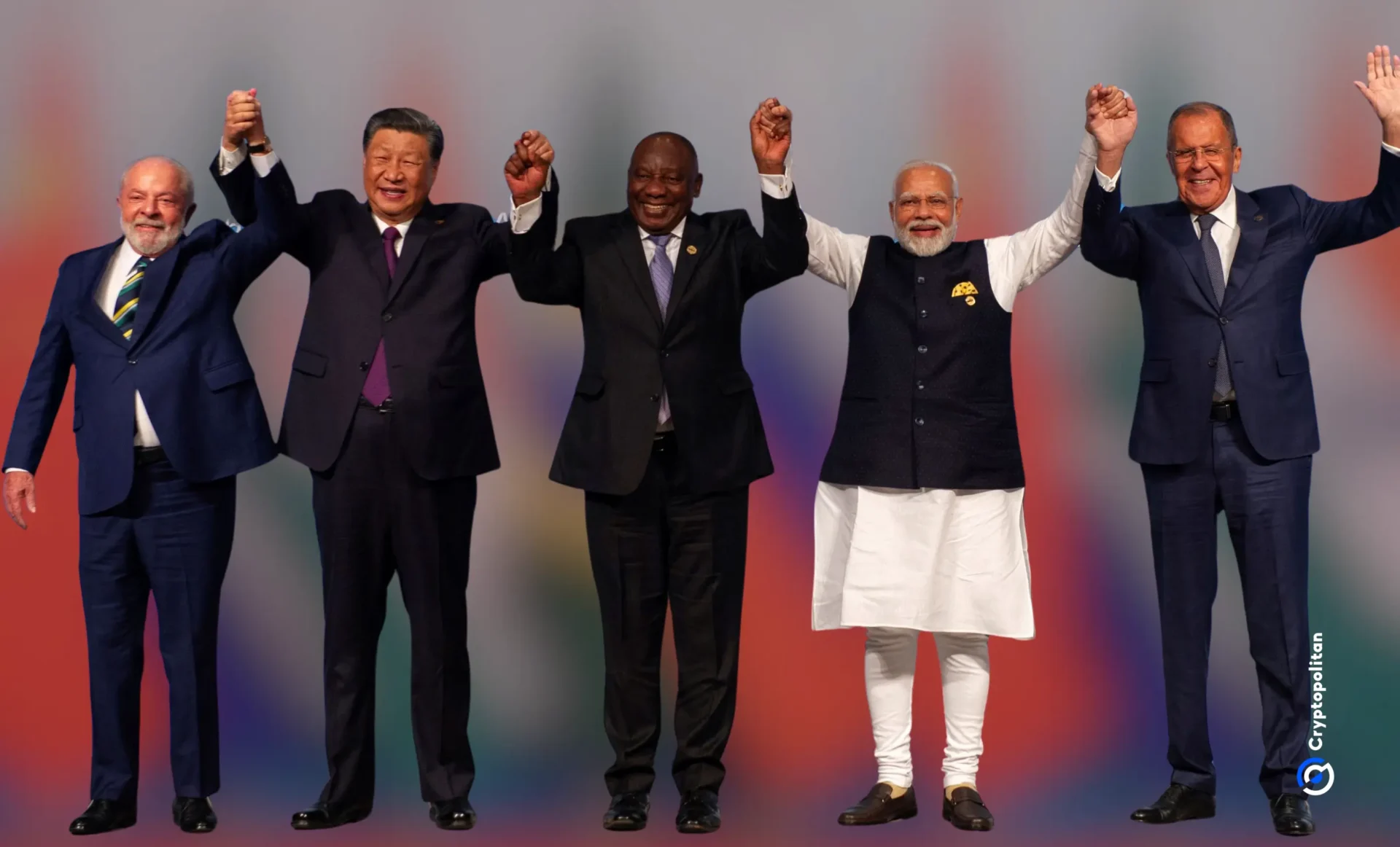BRICS has struck a deal to settle international trade in national currencies, taking a direct shot at the dominance of the US dollar.
Russia, eager to break free from Western sanctions, is leading this mission, pitching a new “multicurrency payment system.”
Russia’s vision
The Russian Finance Ministry, the Bank of Russia, and Yakov & Partners (a Moscow-based consultancy) released a report explaining that the system is designed to “ring-fence” participating countries from pressures like US sanctions.
Russia is selling this idea as a lifeline. It hopes to win over other members, but it might face resistance. India, for one, has made it clear that it isn’t planning to ditch the dollar anytime soon if ever.
The country continues to fully embrace USD, especially in its cross-border trade. The UAE, too, heavily depends on the dollar, particularly given its global business hubs like Dubai, where the dollar is heavily used in trade and financial transactions.
Still, Russia believes the multicurrency system will find takers, especially with the new members on board. The recent expansion included Iran, UAE, Ethiopia, and Egypt
Russia is betting that it will help this plan gain traction. The proposal also mentions establishing a network of banks to handle these transactions and creating centers for mutual trade in commodities like oil, gas, grain, and gold.
Blockchain in the mix
The plan even includes options like using distributed ledger technology (DLT) to settle payments through tokens.
According to the report, one of the advantages of that is eliminating the credit risks associated with traditional banking systems.
In the global context, the US dollar still dominates. It’s used in 58% of international payments and 54% of trade invoices, according to Brookings Institution data.
Meanwhile, China, the world’s leading industrial powerhouse, is backing the de-dollarization, as it seeks to boost its own currency’s role in global trade.
China’s interest in breaking free from US influence aligns perfectly with Russia’s ambitions, and together they may have enough clout to make this multicurrency system a reality.
Interestingly, the BRICS nations have agreed to pool $100 billion in foreign currency reserves to support each other during financial crises, a trend that started in 2016.
On top of that, their New Development Bank has approved almost $33 billion in loans since. Compare that to the World Bank, which committed $72.8 billion in fiscal year 2023.
Trade among the BRICS countries has skyrocketed, increasing by 56% between 2017 and 2022 to reach $422 billion.
Brazil and Russia, both rich in natural resources, are perfect trade partners for resource-hungry China.
But there’s tension between India and China, especially with their long-standing border disputes. Trade between these two powerhouses remains weak.
This articles is written by : Fady Askharoun Samy Askharoun
All Rights Reserved to Amznusa www.amznusa.com
Why Amznusa?
AMZNUSA is a dynamic website that focuses on three primary categories: Technology, e-commerce and cryptocurrency news. It provides users with the latest updates and insights into online retail trends and the rapidly evolving world of digital currencies, helping visitors stay informed about both markets.
